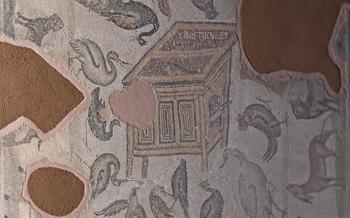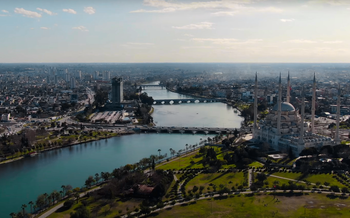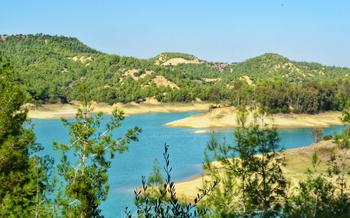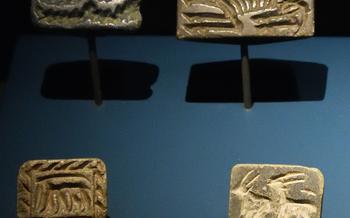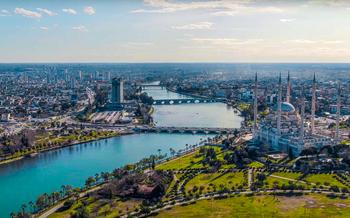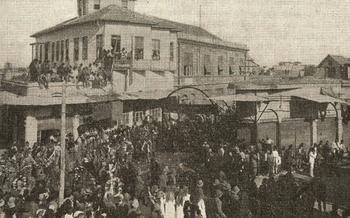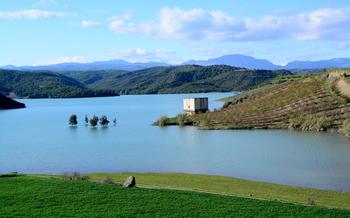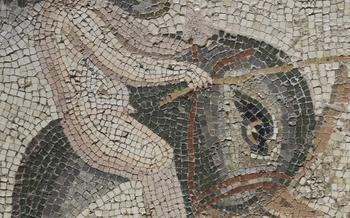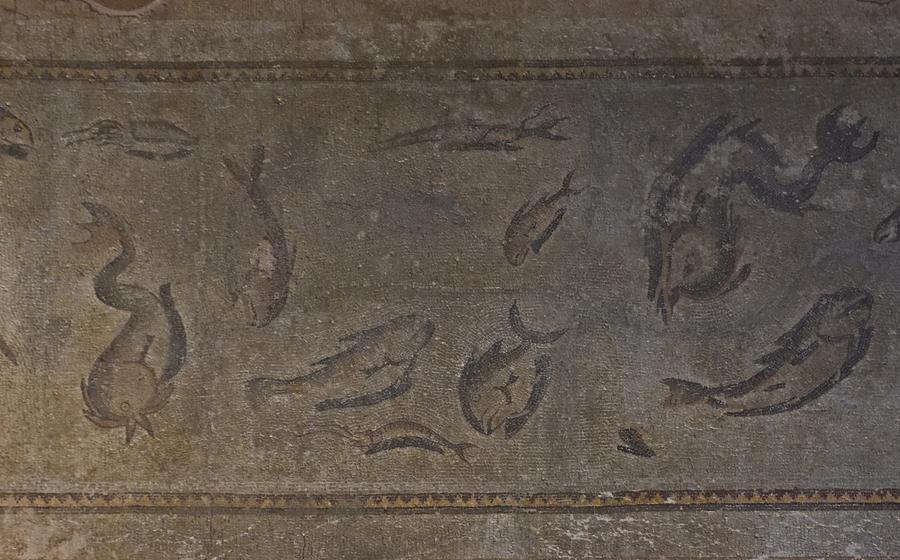
Ancient City of Anavarza
- The Antiquity of Anavarza
- Exploring the City Walls
- Different Sections and Gates
- Architectural Features
- Panoramic Views
- The Grand Temple of Zeus
- The Amphitheater
- The Anavarza Museum: A Treasure Trove of Ancient History
- The Aqueduct System
- The Necropolis: Unveiling Anavarza's Funerary Secrets
- The Basilica: A Testament to Ancient Faith
- The Hippodrome
- The Odeon
- The Stadium
- The Nymphaeum
- The Mausoleum
- Insider Tip: Unveiling the Hidden Treasures of Anavarza
The Antiquity of Anavarza
Anavarza, an ancient city in the Çukurova region of southern Turkey, holds significant historical importance. Founded in the 3rd century BC by Antiochus IV Epiphanes, it served as a strategic military base and a flourishing trade center on the Silk Road. During the Roman period, Anavarza became a prominent city of Cilicia and enjoyed a period of prosperity. It was later under Byzantine rule before being conquered by the Arabs in the 7th century.
The city's impressive ruins, which have been partially restored and preserved, stand as a testament to its rich past. To reach Anavarza from Adana, you can take a bus or rent a car and drive for about an hour. The best time to visit is during spring or fall, when the weather is pleasant for exploring the outdoor ruins.
Exploring the City Walls
The city walls of Anavarza stand as a testament to the city's strategic importance and enduring legacy. Constructed to provide protection against invaders, these formidable fortifications encircled the entire city, forming an imposing barrier that few dared to challenge.
Different Sections and Gates
The city walls were divided into several sections, each featuring massive gates that allowed for controlled access to the city. The most notable of these gates is the Grand Gate, also known as the Triumphal Arch, which served as the main entrance to Anavarza. This grand gateway, adorned with intricate carvings and sculptures, welcomed visitors and dignitaries alike, showcasing the city's wealth and power.
Architectural Features
The construction of the city walls reflects the advanced engineering skills of the ancient Anavarza inhabitants. Built using large blocks of stone, the walls were designed to withstand the test of time and repel enemy attacks. The walls' thickness and height, combined with strategically placed towers and bastions, created an impenetrable defense system that protected the city for centuries.
Panoramic Views
Scaling the city walls rewards visitors with breathtaking panoramic vistas that extend far beyond the ancient city's boundaries. From atop the walls, one can marvel at the sprawling countryside, dotted with fields, orchards, and distant mountains. The views from the walls offer a unique perspective on Anavarza's strategic location, nestled amidst fertile plains and surrounded by natural barriers.
The Grand Temple of Zeus
The Grand Temple of Zeus, a testament to the devotion and grandeur of ancient Anavarza, stood as a beacon of Hellenic heritage within the city walls. Dedicated to the king of the gods, Zeus Olympios, this sacred edifice was a marvel of architectural prowess and religious significance.
The temple's design, a testament to the skill of ancient architects, showcased a blend of Greek and Roman influences. Its towering columns, adorned with intricate carvings, supported a majestic entablature that framed the sky. Inside the temple, a colossal statue of Zeus, crafted from gleaming marble, commanded awe and reverence.
While time and earthquakes have taken their toll on the temple, its ruins still evoke a sense of grandeur and spirituality. Scattered fragments of friezes and sculptures, each a masterpiece of ancient artistry, hint at the temple's former glory.
Beyond its architectural splendor, the Grand Temple of Zeus held immense religious significance for the people of Anavarza. As the patron deity of the city, Zeus was revered and worshipped by its inhabitants. Religious festivals, processions, and sacrifices were held within the temple's hallowed halls, creating an atmosphere of devotion and solemnity.
Today, the remnants of the Grand Temple of Zeus stand as a poignant reminder of Anavarza's rich past. Though its grandeur may have faded with time, the temple's enduring presence serves as a testament to the enduring legacy of ancient Greek religion and culture.
The Amphitheater
The amphitheater of Anavarza is a testament to the city's grandeur and its significance as a center of entertainment. This impressive structure, capable of accommodating thousands of spectators, was the venue for various events, including gladiatorial contests, animal fights, and theatrical performances.
Built in the 2nd century AD, the amphitheater boasts remarkable architectural features, including a well-preserved stage, intricate carvings, and excellent acoustics. The seating arrangement, divided into several tiers, provided spectators with an unobstructed view of the events taking place in the arena.
Despite the ravages of time and earthquakes, the amphitheater's imposing presence remains. Ongoing restoration efforts aim to preserve and enhance this iconic landmark, allowing visitors to experience the thrill and excitement of ancient spectacles in a truly immersive setting.
The Anavarza Museum: A Treasure Trove of Ancient History
Location and Accessibility:
Situated in the heart of Anavarza, the Anavarza Museum stands as a testament to the rich history and cultural heritage of this ancient city. Easily accessible by foot or public transportation, the museum welcomes visitors to delve into the fascinating world of Anavarza's past.
Artifacts and Exhibits:
Within the museum's walls, a treasure trove of artifacts and exhibits awaits exploration. From intricately carved sculptures and mosaics to pottery, coins, and jewelry, the museum showcases the artistic prowess and craftsmanship of Anavarza's inhabitants. These artifacts offer a glimpse into the daily lives, religious beliefs, and economic activities that shaped this ancient metropolis.
Insight into Ancient Life and Culture:
Through its comprehensive collection, the Anavarza Museum provides visitors with a unique opportunity to gain insight into the daily life and culture of the city's inhabitants. Interactive displays and informative panels bring to life the stories of Anavarza's people, their customs, traditions, and social interactions. Visitors can learn about the city's government, trade networks, and educational system, gaining a deeper appreciation for the complexity and sophistication of ancient Anavarza.
Guided Tours and Educational Programs:
To enhance the visitor experience, the Anavarza Museum offers guided tours led by knowledgeable and passionate experts. These tours provide in-depth insights into the significance of the artifacts and the historical context of Anavarza. Additionally, the museum organizes educational programs, workshops, and lectures throughout the year, catering to both adults and children, fostering a deeper understanding and appreciation of ancient history and archaeology.
The Aqueduct System
Anavarza's sophisticated ancient water supply system, evident in the remains of its aqueduct, stands as a testament to the city's advanced engineering prowess. The aqueduct, a marvel of its time, channeled water from distant sources, ensuring a steady supply for the city's growing population. Its construction involved meticulous planning, utilizing gravity to transport water efficiently. The aqueduct's impressive remnants, including towering arches and meticulously laid stone channels, offer a glimpse into the ingenuity of Anavarza's ancient builders. Its significance extends beyond its practical function, as it played a vital role in the city's development, allowing for the establishment of public fountains, baths, and gardens, which contributed to the overall prosperity and quality of life for Anavarza's inhabitants. Ongoing efforts to restore and preserve this remarkable system not only aim to protect its historical legacy but also to shed light on the innovative water management techniques employed by ancient civilizations.
The Necropolis: Unveiling Anavarza's Funerary Secrets
Location and Extent: Just beyond the city walls of Anavarza lies the ancient necropolis, a vast expanse of burial grounds that extends for several kilometers. This sprawling cemetery served as the final resting place for generations of Anavarza's inhabitants, offering a glimpse into their funerary customs and beliefs.
Types of Tombs and Burial Practices: The necropolis encompasses a diverse array of tombs, ranging from simple rock-cut graves to elaborate chamber tombs. These tombs vary in size and complexity, reflecting the social status and wealth of the deceased. Some tombs feature intricate carvings and inscriptions, providing valuable insights into the lives and legacies of those buried within.
Significance of the Necropolis: The necropolis holds immense significance in understanding Anavarza's funerary practices and cultural traditions. By studying the tombs and their contents, archaeologists have gained valuable insights into the beliefs and rituals surrounding death and the afterlife in ancient Anavarza. Furthermore, the necropolis provides a glimpse into the social hierarchy and economic disparities that existed within the city.
Ongoing Archaeological Research: The necropolis remains an active site of archaeological research, with ongoing excavations uncovering new tombs and artifacts that shed light on Anavarza's past. These discoveries contribute to our understanding of the city's funerary customs and provide valuable insights into the lives and beliefs of its ancient inhabitants.
The Basilica: A Testament to Ancient Faith
Standing amidst the ruins of Anavarza, the basilica emerges as a testament to the city's once-thriving religious life. Its grand scale and intricate architectural features hint at the significance it held for the ancient inhabitants. Constructed during the early Christian era, the basilica served as a central place of worship, where the community gathered for religious ceremonies and rituals.
The basilica's design reflects the architectural style prevalent in the region during that period. Its spacious interior features a nave flanked by aisles, separated by rows of columns. The apse, where the altar would have been located, is adorned with intricate carvings and decorative elements. The basilica's walls were once adorned with colorful frescoes and mosaics, depicting biblical scenes and stories, which have faded over time but still evoke a sense of awe and reverence.
Despite the passage of centuries and the ravages of time, the basilica's structure remains remarkably intact, a testament to the skill and craftsmanship of its builders. Restoration efforts have been undertaken to preserve this precious relic, ensuring that future generations can appreciate its grandeur and significance.
Today, the basilica stands as a silent witness to the rich spiritual traditions of Anavarza. Its ruins invite visitors to contemplate the deep-rooted faith that once permeated the city, offering a glimpse into the lives and beliefs of its ancient inhabitants.
The Hippodrome
The ancient city of Anavarza was once home to a magnificent hippodrome, a venue dedicated to chariot races and other thrilling spectacles. This impressive structure, located in the heart of the city, played a significant role in the social and cultural life of Anavarza's inhabitants.
The hippodrome was a vast and elongated arena, designed to accommodate thousands of spectators who would gather to witness the exhilarating races and performances. The central track, where the chariots competed, was flanked by tiered seating sections that rose steeply on either side. These seating areas, known as cavea, were divided into distinct sections for different social classes, ensuring that everyone had a designated place to enjoy the events.
The starting gates, positioned at one end of the track, were meticulously designed to ensure a fair and simultaneous start for the competing chariots. These gates were adorned with intricate carvings and sculptures, reflecting the importance and prestige associated with the races.
Chariot races, a staple of ancient Roman entertainment, were a highlight of the hippodrome's events. Skilled charioteers, often slaves or prisoners of war, competed fiercely for victory, guided by the cheers and jeers of the spectators. The races were not merely contests of speed but also displays of skill, strategy, and daring.
In addition to chariot races, the hippodrome also hosted other forms of entertainment, such as acrobatics, animal performances, and gladiatorial contests. These events were designed to thrill and entertain the masses, providing a much-needed escape from the daily rigors of life in ancient Anavarza.
Today, the hippodrome lies in ruins, its once-vibrant atmosphere replaced by the silence of history. However, its imposing structure still conveys the grandeur and spectacle that it once exuded. Visitors can explore the remnants of the seating areas, imagine the roar of the crowd, and picture the chariots thundering down the track.
While the hippodrome may no longer host the thrilling events of its past, it remains a testament to the rich cultural heritage of Anavarza and the enduring fascination with the spectacles of ancient Rome.
The Odeon
The odeon in Anavarza was a smaller theater, primarily intended for musical performances and recitals. While it may not be as grand as the amphitheater, the odeon holds its own significance in understanding the cultural life of ancient Anavarza.
The odeon's architectural design featured a semi-circular auditorium with tiered seating, allowing for optimal acoustics and clear sightlines. The stage area was relatively small, suitable for performances by musicians, singers, and actors. The odeon's intimate atmosphere created a unique and immersive experience for audiences.
Although the odeon has undergone the ravages of time, its ruins still stand as a testament to the city's vibrant cultural scene. Visitors can explore the remnants of the stage, seating areas, and intricate architectural details, gaining insights into the diverse forms of entertainment enjoyed by Anavarza's inhabitants.
Unfortunately, the odeon is currently closed for restoration work aimed at preserving its historical integrity. However, visitors can still admire its impressive facade and appreciate its significance in the cultural tapestry of ancient Anavarza.
The Stadium
Among the impressive ruins of Anavarza, the stadium stands as a testament to the city's sporting prowess and entertainment culture. This ancient arena was designed for athletic competitions, primarily chariot races and footraces, which played a significant role in Roman society.
The stadium's elongated shape and parallel sides allowed for a large track, where contestants showcased their skills and speed. Spectators gathered in tiers of seating that rose from the track, providing an elevated view of the exhilarating races. The stadium's design ensured excellent acoustics, allowing the roar of the crowd and the thunderous hooves of the chariots to reverberate throughout the venue.
Today, the stadium lies in ruins, its once-proud structure weathered by time and natural forces. However, its grandeur can still be imagined, and its historical significance remains palpable. Ongoing efforts are underway to restore and preserve this ancient sporting venue, promising future generations a glimpse into Anavarza's vibrant sporting heritage.
The Nymphaeum
Among the impressive ruins of Anavarza, the Nymphaeum stands as a testament to the city's grandeur and the importance of water in ancient times. This monumental fountain was an architectural masterpiece, serving both a practical and an aesthetic purpose. Constructed with intricate carvings and adorned with sculptures of nymphs and other mythological figures, the Nymphaeum was a place of beauty and tranquility. Water cascaded from the fountain's elaborate facade, creating a soothing atmosphere and providing a vital source of refreshment for weary travelers and residents alike. Today, the Nymphaeum stands as a reminder of Anavarza's rich history and its enduring legacy as a center of culture and civilization. It is a must-see for anyone interested in exploring the ancient world and its architectural wonders.
The Mausoleum
The Mausoleum in ancient Anavarza is an awe-inspiring monument that captivates visitors with its grandeur and historical significance. Built as a final resting place for prominent individuals, the mausoleum stands as a testament to the city's cultural and architectural achievements.
The mausoleum's architectural design is a fusion of Roman and local influences, showcasing intricate carvings, decorative elements, and a towering structure that commands attention. Its imposing presence evokes a sense of reverence and respect for the departed laid to rest within its walls.
Although the identities of those entombed in the mausoleum remain shrouded in mystery, their legacies live on through the elaborate decorations and inscriptions adorning the monument. These intricate details provide glimpses into the lives and accomplishments of Anavarza's elite, offering valuable insights into the city's social and political history.
Currently, the mausoleum undergoes careful restoration efforts aimed at preserving its grandeur and ensuring its longevity. Visitors can explore the site, marveling at its architectural finesse and contemplating the lives of those who once occupied this sacred space.
Insider Tip: Unveiling the Hidden Treasures of Anavarza
Beyond the breathtaking ruins, Anavarza holds a plethora of hidden gems waiting to be discovered. For an immersive culinary experience, venture into the heart of Adana and savor the delectable flavors of traditional Turkish cuisine at local restaurants and cafes. Don't miss the chance to indulge in the city's renowned dish, Adana kebab, a succulent grilled minced meat skewer that will tantalize your taste buds.
To capture the essence of Anavarza's ancient grandeur, embark on a photographic journey. The golden hour, as the sun dips towards the horizon, casts a warm glow upon the ruins, creating an ethereal atmosphere. Experiment with different angles and perspectives to capture the majesty of the city walls, the intricate carvings of the temple, and the sweeping vistas from the amphitheater.
Combine your exploration of Anavarza with a visit to nearby attractions for a well-rounded historical and cultural experience. Journey to the ancient city of Misis, just 20 kilometers away, to marvel at its impressive ruins, including a well-preserved Roman theater. Alternatively, delve into the captivating world of mosaics at the Zeugma Mosaic Museum in Gaziantep, showcasing stunning artworks from ancient Zeugma.
Whether you're a history buff, an architecture enthusiast, or simply seeking an off-the-beaten-path adventure, Anavarza offers a treasure trove of discoveries. Embrace the opportunity to explore this ancient city, immerse yourself in its rich history, and create lasting memories that will transport you back to a bygone era.
